· Zen HuiFer · Learn · 需要4 分钟阅读
September 2024 Programming Language Ranking | C language drops out of the top three, lowest in history, Python hits new high
September 2024 TIOBE Index: C drops to 4th place, lowest ever; Python hits new high at 20.17%. C++, Java top the list. Rust gains traction.
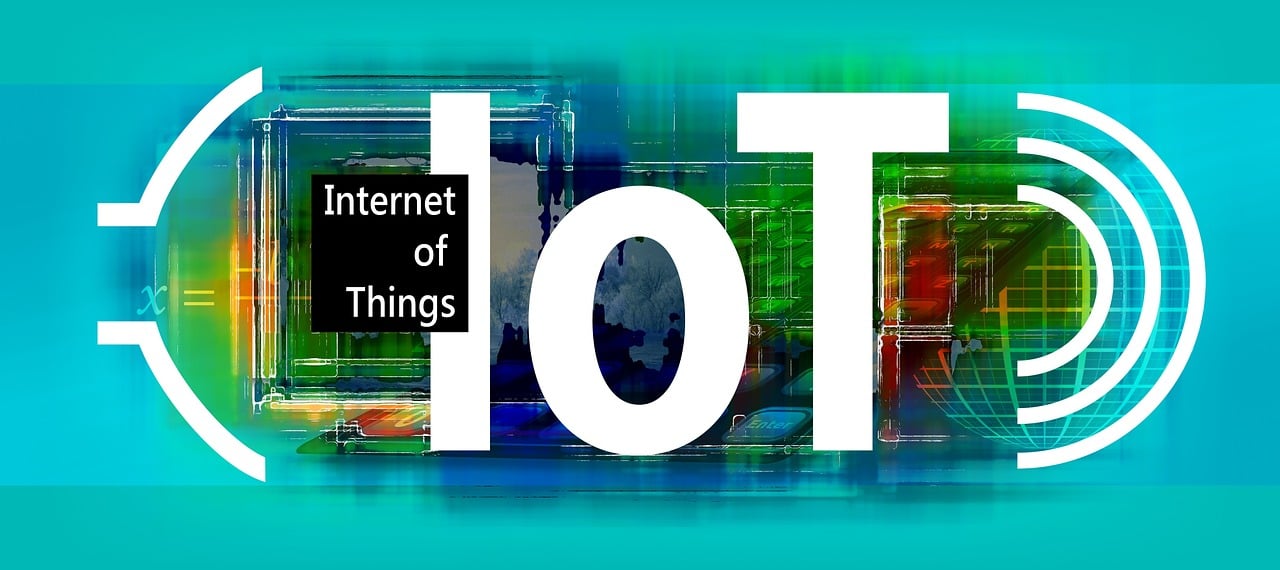
The programming language rankings for September 2024 by TIOBE have been released, with the official title being: Programming language C has fallen to its lowest position ever.
The C language, known as the “mother of programming languages,” has dropped one place in this month’s TIOBE index and currently ranks fourth, the lowest ranking since the index began in 2001.
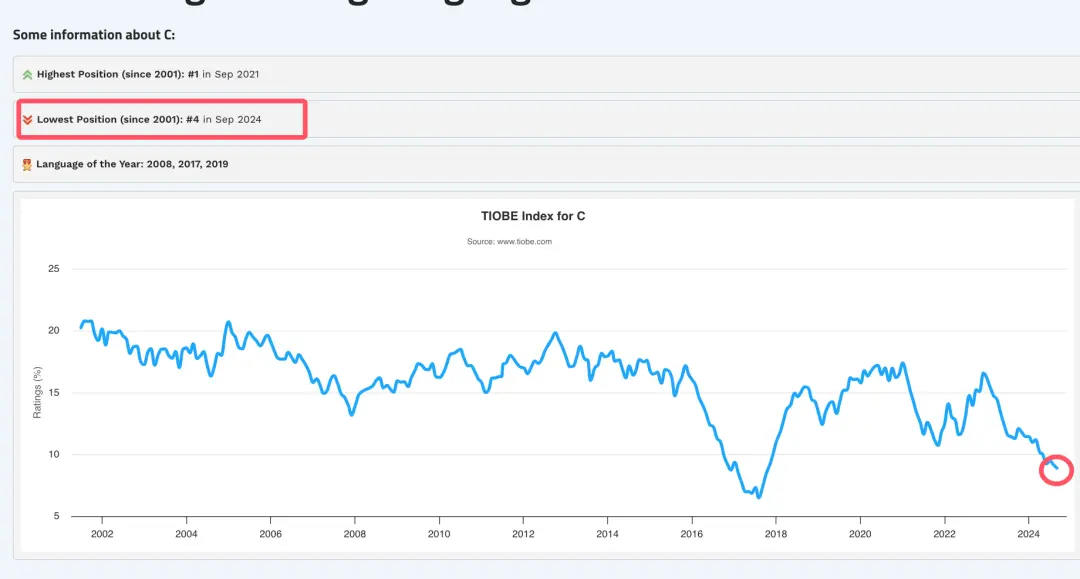
Is C gradually losing its influence? As a small yet sophisticated programming language, C has long been favored in embedded systems due to its ability to generate highly efficient code. However, one of the biggest shortcomings of C is its lack of scalability. Due to the absence of object-oriented features, writing and maintaining large C programs is often difficult. Nowadays, with the enhancement of embedded system functionality, the code size is also increasing. More and more embedded compilers provide good support for C++, and many developers are starting to shift from C to C++and Rust.

Earlier this year, the US Department of Defense planned to gradually shift from C language to Rust to promote the transition to memory safe programming languages.
To this end, the US Defense Advanced Research Projects Agency (DARPA) is funding the development of a code conversion tool called TRACTOR, which stands for “TRanslation All C TO Rust”. Its purpose is to automatically convert existing C code into Rust code by utilizing machine learning techniques. This project aims to accelerate and simplify the migration process from C to Rust, thereby improving the memory security of the code.

More and more companies are considering Rust as an alternative to C.
 C ranked highest in September 2021, in first place:
C ranked highest in September 2021, in first place:
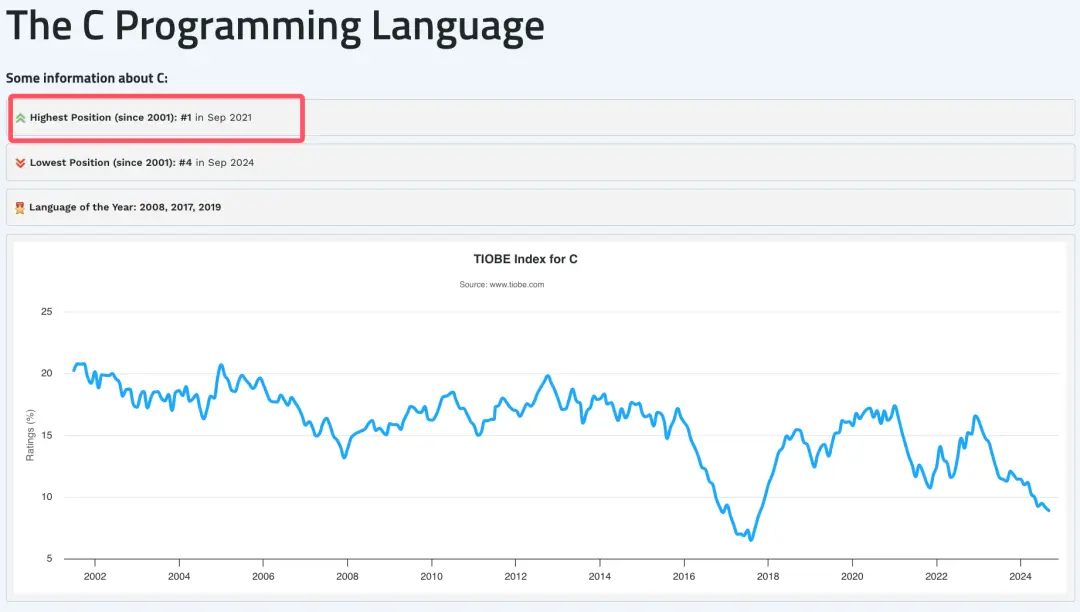
The top three are Python, C++, and Java, with Python accounting for an astonishing 20.17%:

Python just hit a new high last month, and it hit another high this month:
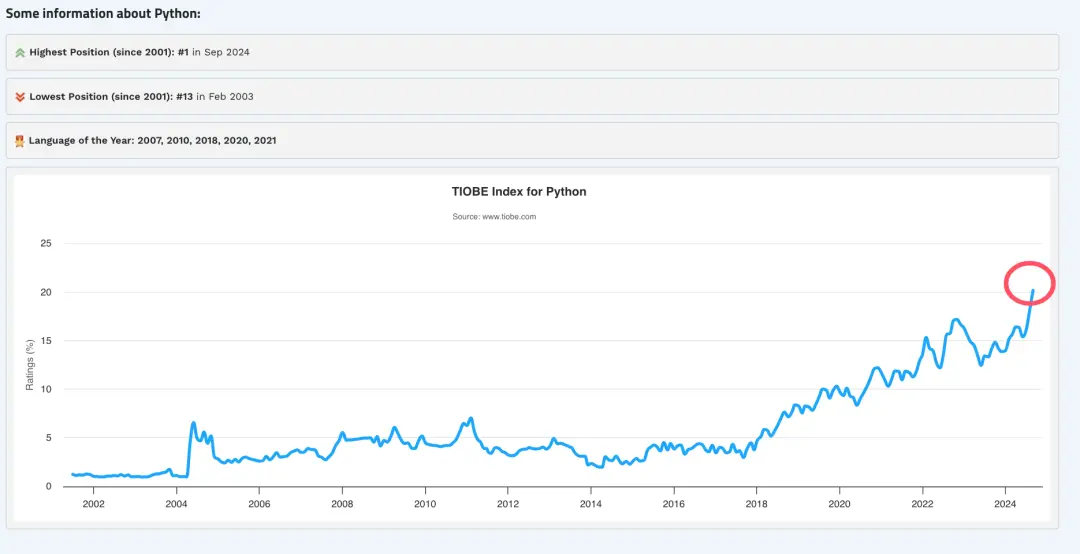
In summary, no one can shake the dominant position of Python now, and it has become the most popular programming language.
There are several reasons why Python can become the most popular programming language:
Easy to get started: Python syntax is concise and clear, making it easy to learn and suitable for beginners to get started.
Widely applicable Pan: Python has a wide range of applications in various fields, including web development, data science, artificial intelligence, scientific computing, automated scripting, and more.
Powerful libraries and frameworks: Python has rich libraries and frameworks, such as Django, Flask (web development), NumPy, Pandas (data analysis), TensorFlow, PyTorch (machine learning), etc., which greatly improve development efficiency.
Community support: Python has an active developer community that provides a large number of tutorials, documentation, and third-party libraries, making it easy for developers to solve problems and learn new technologies.
Cross platform: Python is cross platform and can run on various operating systems, including Windows, macOS, Linux, and more.
Scalability: Python can be integrated with other languages such as C or C++to improve performance or access specific system resources.
Multipurpose: Python can be used to write simple scripts as well as to develop complex applications.
Education and Research: Python is widely used in academia and education, with many universities and research institutions choosing it as their preferred language for teaching and research.
This month, the top ten rankings are:
Python,C++,Java,C,C#,JavaScript,Visual Basic,Go,SQL,Fortran。
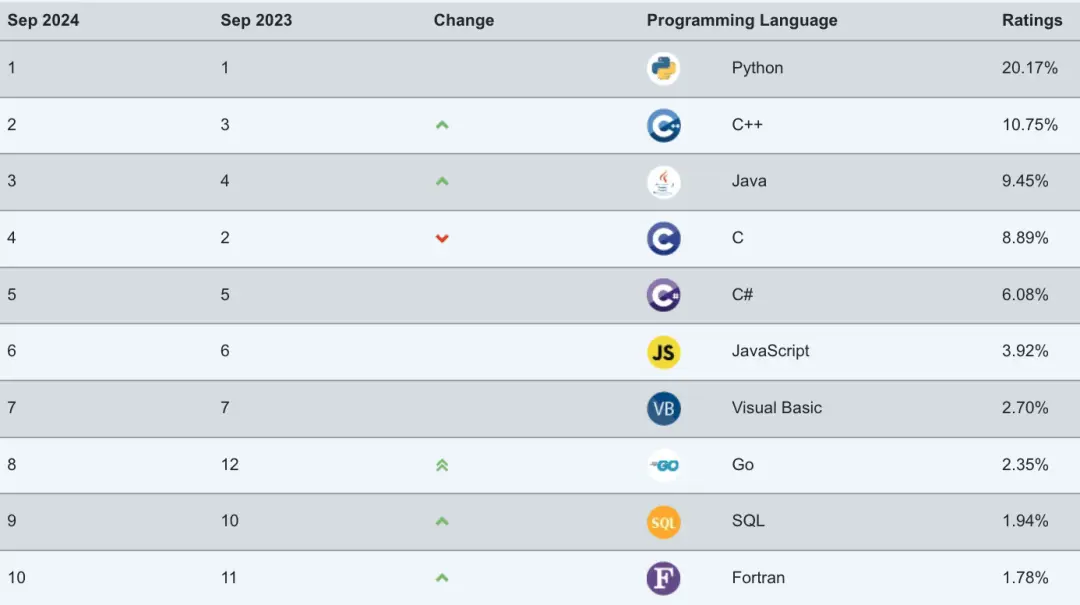
Python,C++,Java,C,C#,JavaScript,Visual Basic,GoSQL, Fortran Historical Curve Chart:

The rankings from 11 to 20 are as follows:
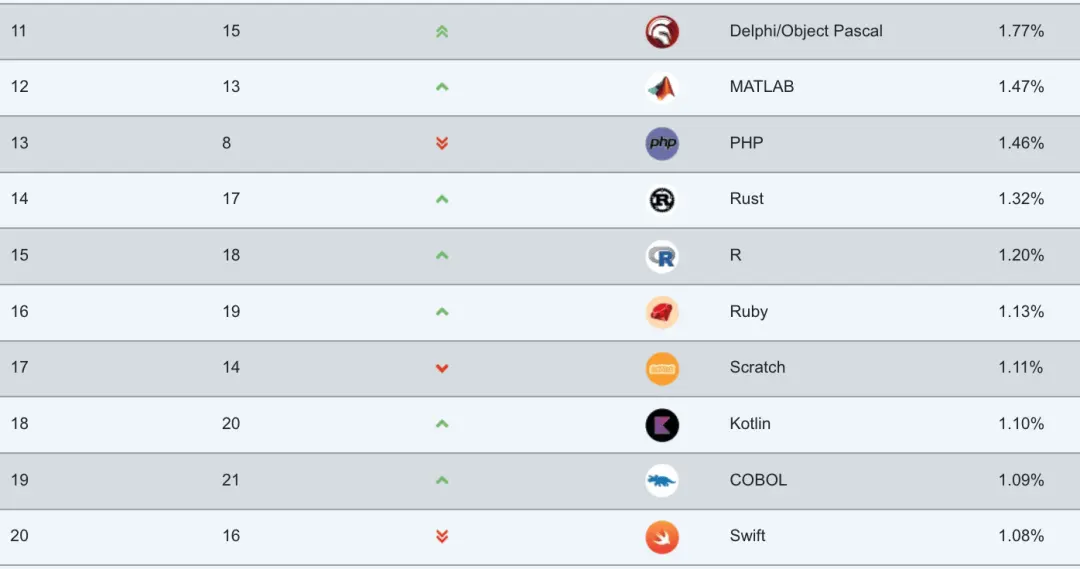
Programming languages ranked 21-50:
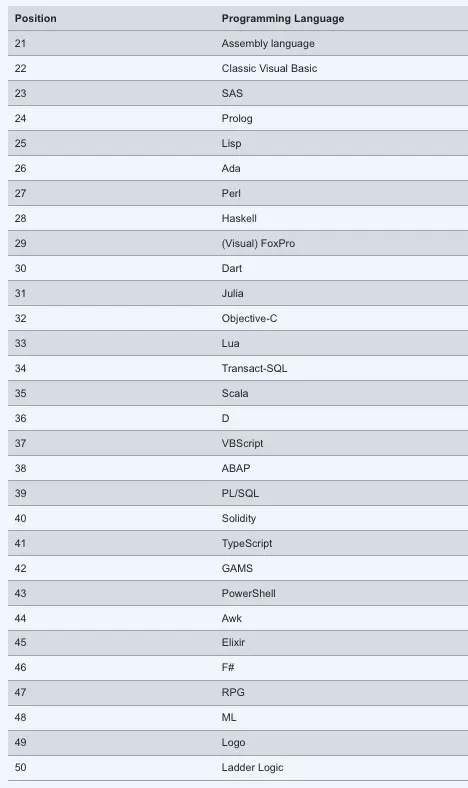
Programming languages for 51-100:
ABC, ActionScript, Algol, Apex, APL, Bash, Carbon, CFML, CHILL, CL (OS/400), CLIPS, Clojure, Crystal, Curl, DiBOL, Erlang, Forth, Groovy, Hack, Icon, Inform, Io, J, JScript, LabVIEW, Modula-2, Mojo, MQL5, NATURAL, Nim, OCaml, Occam, OpenCL, OpenEdge ABL, PL/I, PostScript, Q, Ring, Scheme, Smalltalk, Snap!, SPARK, Stata, SystemVerilog, Tcl, VHDL, Whitespace, Wolfram, X++, Zig
Historical rankings of major programming languages (1988-2024):
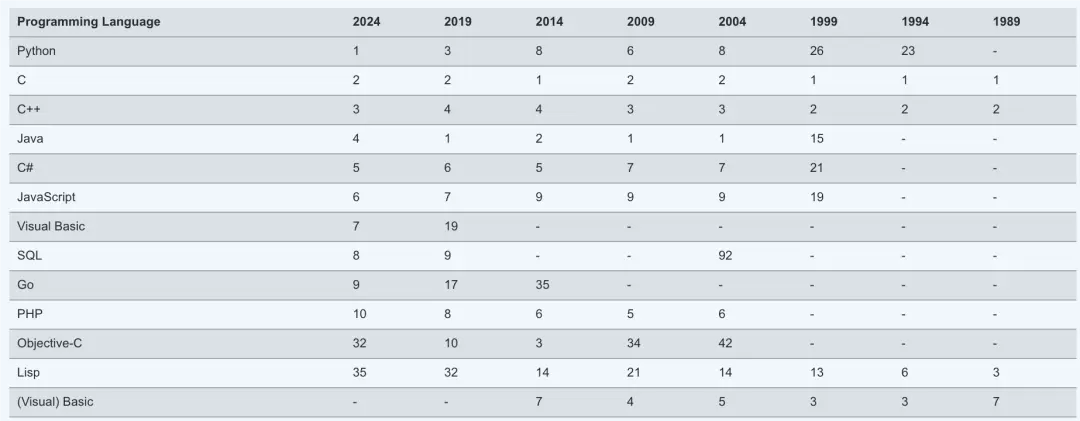
Programming Language Celebrity List (2003-2023):
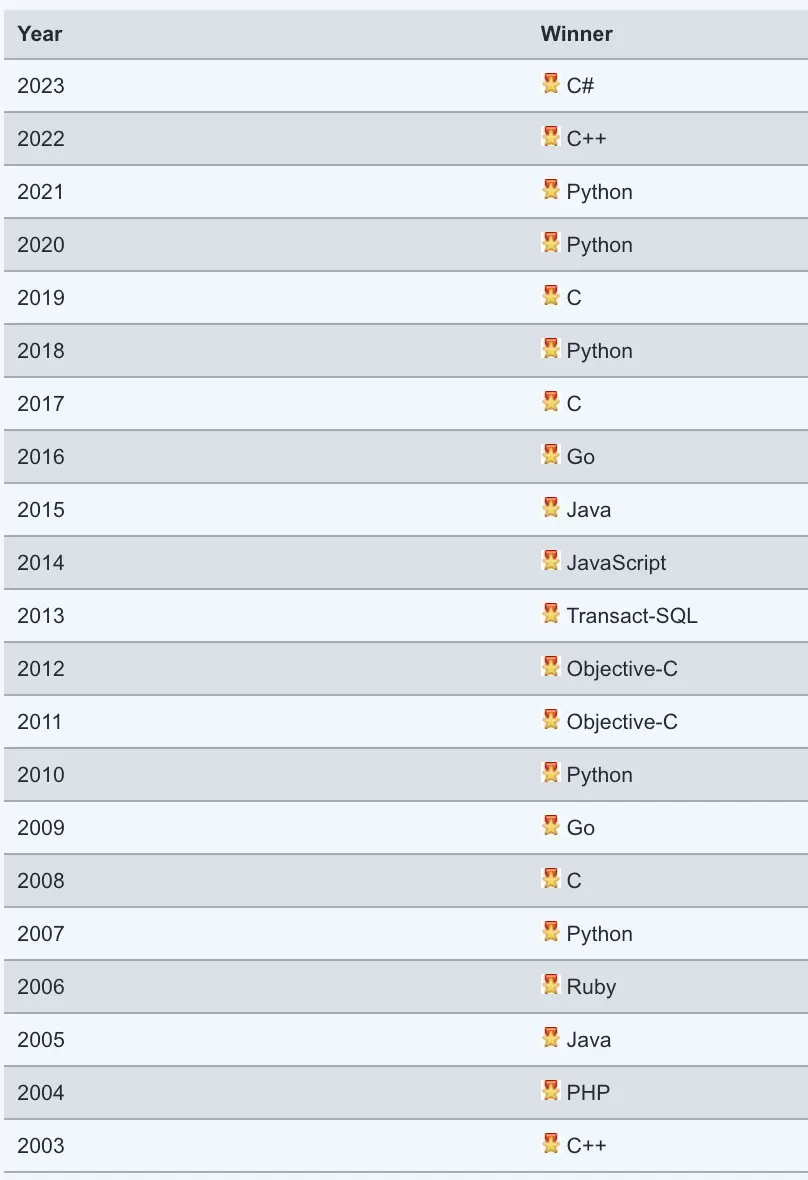
TIOBE publishes a monthly ranking of programming languages based on the number of global technical engineers, courses, and third-party vendors, including popular search engines and technology communities such as Google, Baidu, Wikipedia, and more.
The data reflects the changing trends of mainstream programming languages, which can serve as a reference for our learning and work. However, each language has its own suitable application scenarios, so there is no need to pay too much attention to it, after all, the quality of a language depends on how it is used.